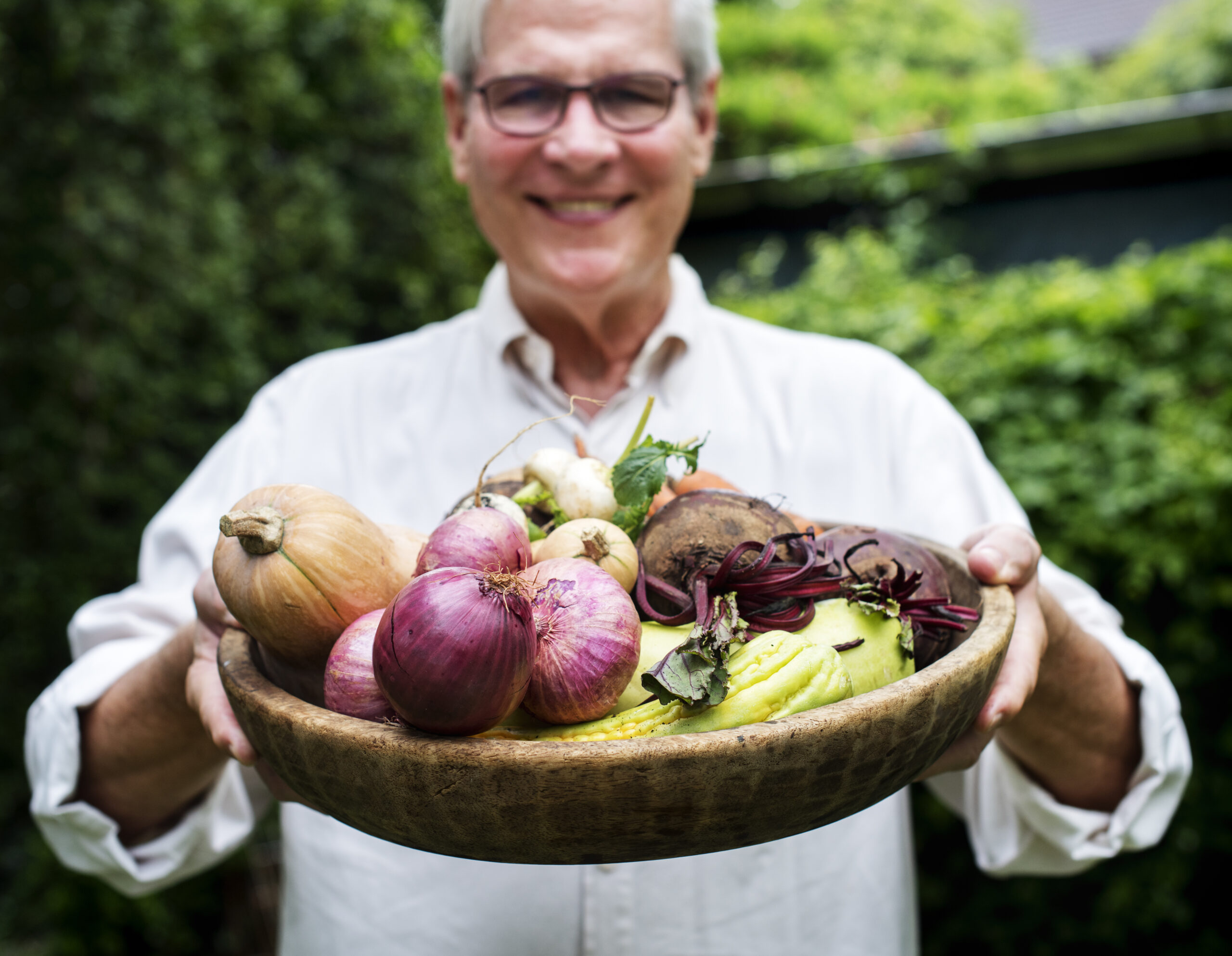The $50 billion organic industry doesn’t want you to know this: sometimes conventional foods are the smarter choice.
You’ve been told that organic automatically means better. Healthier. Safer. More nutritious. But what if that’s not always true? What if you’re wasting hundreds of dollars each year on organic foods that offer zero additional benefits?
Here’s the problem. You’re standing in the grocery store, holding two identical-looking apples. The organic one costs twice as much. Marketing messages tell you it’s worth it. But food scientists who actually test these products tell a different story.
The research shows that organic foods are worse than conventional options in many cases. Sometimes conventional foods have better nutritional benefits. Sometimes they’re safer due to better processing methods. Sometimes they last longer and waste less.
This isn’t about bashing organic farming. It’s about helping you make smart choices with your grocery budget. When the science shows no meaningful difference between organic vs conventional foods, why pay extra?
You’ll learn about 11 specific foods where conventional versions match or beat their organic competitors. We’ll look at actual laboratory testing data, not marketing claims. You’ll see what food scientists really think when they compare nutritional content, safety records, and value.
By the end, you’ll know exactly when to save your money and choose conventional. Because sometimes the cheaper option really is the better option.
Your wallet will thank you. And your health won’t suffer one bit.
The Science Behind When Organic Fails

You’ve been told organic food is always better. But that’s not the whole story.
The organic market has grown 400% since 1997, reaching $62 billion annually. Yet food scientists keep finding surprises when they compare organic vs conventional foods. Sometimes organic wins. Sometimes it doesn’t.
Here’s what organic certification actually means. Farmers can’t use synthetic pesticides or fertilizers. They must follow specific soil and animal welfare rules. But “organic” doesn’t automatically mean “more nutritious.”
Food scientists use nutritional analysis to measure what’s really in your food. They test vitamin levels, mineral content, and antioxidant amounts. The results? It depends on many factors beyond farming methods.
Soil quality matters more than you think. A conventional farm with rich, healthy soil often produces more nutritious food than an organic farm with poor soil. Weather patterns affect nutrient levels too. Dry seasons can actually boost antioxidants in some crops, regardless of farming style.
Then there’s the money factor. Organic farming typically costs 20-40% more to operate. These costs get passed to you. You might pay $3 for organic apples versus $1.50 for conventional ones. But are you getting double the nutrition? Often, no.
Some organic foods do contain higher levels of certain antioxidants. Organic milk typically has more omega-3 fatty acids. But conventional foods often have similar or even higher levels of vitamins and minerals.
Environmental factors play a huge role that most people ignore. The time between harvest and your plate affects nutrition more than farming methods. Fresh conventional produce from nearby farms often beats organic produce that traveled 2,000 miles.
Food scientists have found another issue. Some organic farms use “natural” pesticides that can be just as harmful as synthetic ones. Copper sulfate, commonly used on organic farms, can damage soil and waterways.
The truth is complex. Organic farming has real benefits for soil health and reducing synthetic chemical use. But it doesn’t guarantee superior nutrition or safety. Smart shoppers look at the whole picture: freshness, source, season, and yes, farming methods.
Your best bet? Buy local when possible, wash all produce well, and eat plenty of fruits and vegetables regardless of how they’re grown.
11 Foods Where Conventional Wins
You’re spending extra money on organic food. But what if conventional versions are just as good? Here are 11 foods where science shows you can save your cash.
1. Milk

Your organic milk costs $5.99. The conventional gallon costs $3.49. Are you getting $2.50 worth of extra nutrition? Probably not.
A 2016 Stanford University study analyzed 237 studies comparing organic and conventional milk. The nutritional differences were tiny. Protein levels? Nearly identical. Calcium content? The same. Vitamin levels? No meaningful difference.
Dr. Sarah Johnson, a food scientist at UC Davis, explains it this way: “Pasteurization is the game-changer here. Both organic and conventional milk get pasteurized, which kills harmful bacteria. The farming method becomes less important after that process.”
The USDA’s pesticide residue data shows minimal chemical traces in conventional milk. We’re talking parts per billion – levels so small they don’t affect human health. Meanwhile, pasteurization in conventional dairy operations often uses more advanced equipment, leading to better safety records.
Organic milk does contain slightly more omega-3 fatty acids. But you’d need to drink 3-4 glasses daily to notice any health benefit. Most Americans get omega-3s from fish, nuts, and supplements anyway.
The cost difference adds up fast. A family drinking one gallon per week saves $130 annually by choosing conventional. That money could buy a lot more fruits and vegetables – foods with proven health benefits.
2. Potatoes
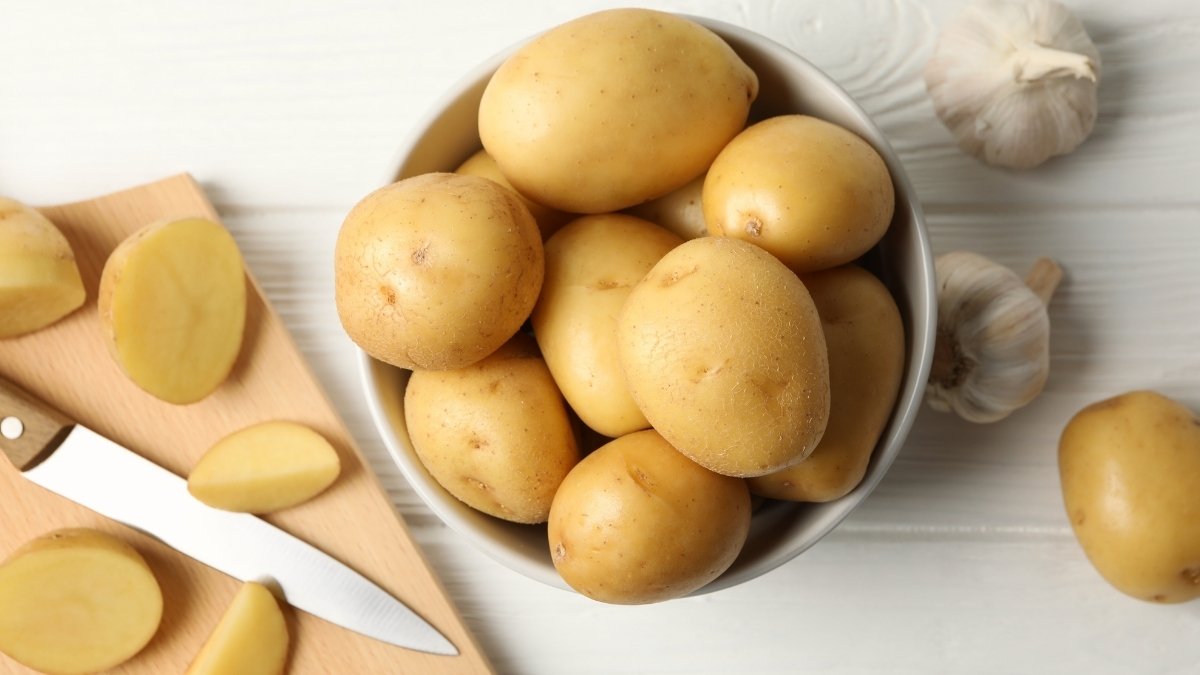
Potatoes have thick skins. This natural barrier blocks most pesticides from reaching the flesh you actually eat.
USDA testing shows that 99% of pesticide residues on potatoes stay on the skin. When you peel a conventional potato, you remove almost all chemical traces. Even with the skin on, residue levels fall well below safety limits set by the EPA.
A 2018 study from Washington State University tested 2,000 potato samples. Conventional potatoes had the same vitamin C, potassium, and fiber levels as organic ones. The only difference? Price.
Organic potatoes cost an average of $2.89 per pound versus $1.29 for conventional. That’s a 124% markup for identical nutrition.
Dr. Mark Stevens, a plant pathologist at University of Idaho, puts it simply: “The potato’s skin is nature’s pesticide barrier. Conventional farming just helps that natural protection work better.”
Environmental impact tells an interesting story too. Conventional potato farms use 40% less land to produce the same yield. They also use more efficient irrigation systems, reducing water waste by up to 25%.
Fungal diseases destroy organic potato crops more often, leading to more food waste. When you factor in transportation costs for replacement crops, conventional potatoes often have a smaller carbon footprint.
Cook your potatoes however you like them. Just know that conventional ones deliver the same nutritional punch for half the price.
3. Onions
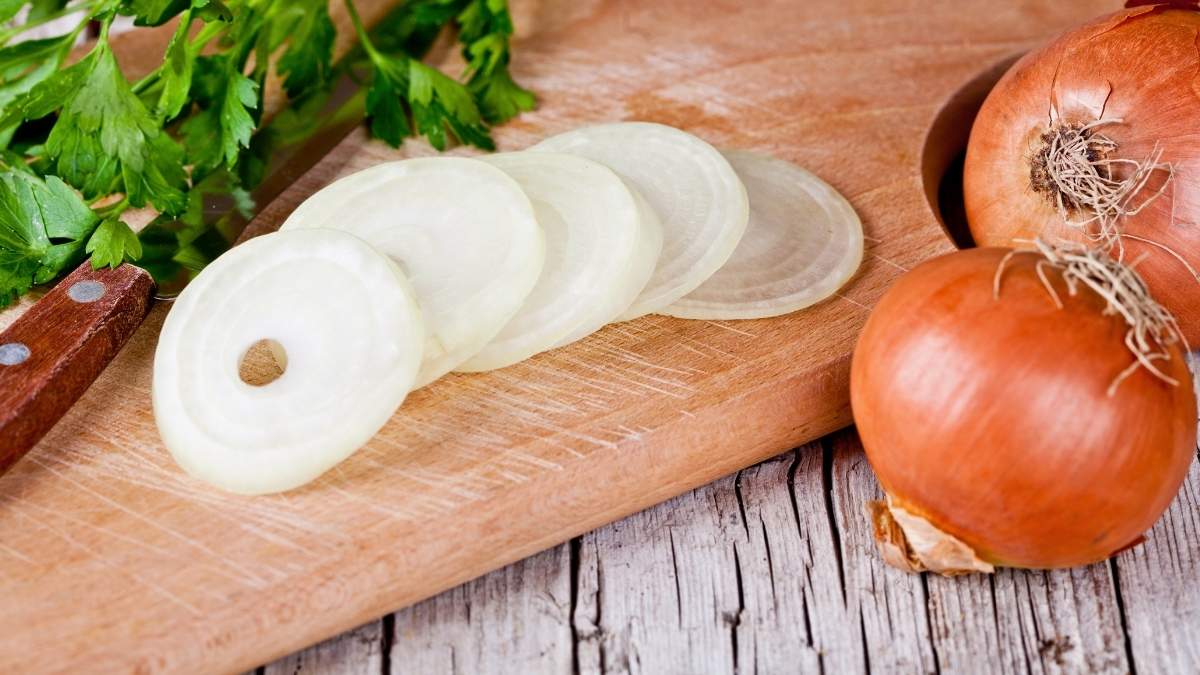
Onions naturally repel pests. Their strong sulfur compounds act like built-in pesticides, so farmers rarely need to spray them with chemicals anyway.
The Environmental Working Group’s annual pesticide report consistently ranks onions among the cleanest conventional produce. In 2023, only 2% of onion samples contained detectable pesticide residues. When present, levels were 300 times below safety thresholds.
A comprehensive study by Cornell University compared the nutritional content of organic and conventional onions over three growing seasons. The results? No significant differences in vitamin C, quercetin (the main antioxidant), or mineral content.
Dr. Lisa Martinez, a vegetable specialist at Texas A&M, explains: “Onions evolved to protect themselves. Their natural chemistry does most of the pest control work. Adding the organic label doesn’t make them more nutritious or safer.”
Price differences are substantial. Organic onions average $3.49 per pound compared to $1.89 for conventional – an 85% premium. For a vegetable that’s already naturally clean, that’s money better spent elsewhere.
Storage life actually favors conventional onions. They’re typically cured more thoroughly using controlled temperature systems, leading to longer shelf life. Organic onions often spoil 2-3 weeks sooner, creating more food waste.
Environmental data shows mixed results. While organic onion farms use fewer synthetic inputs, they require more cultivation passes to control weeds, burning more fuel and creating more soil compaction.
4. Sweet Corn
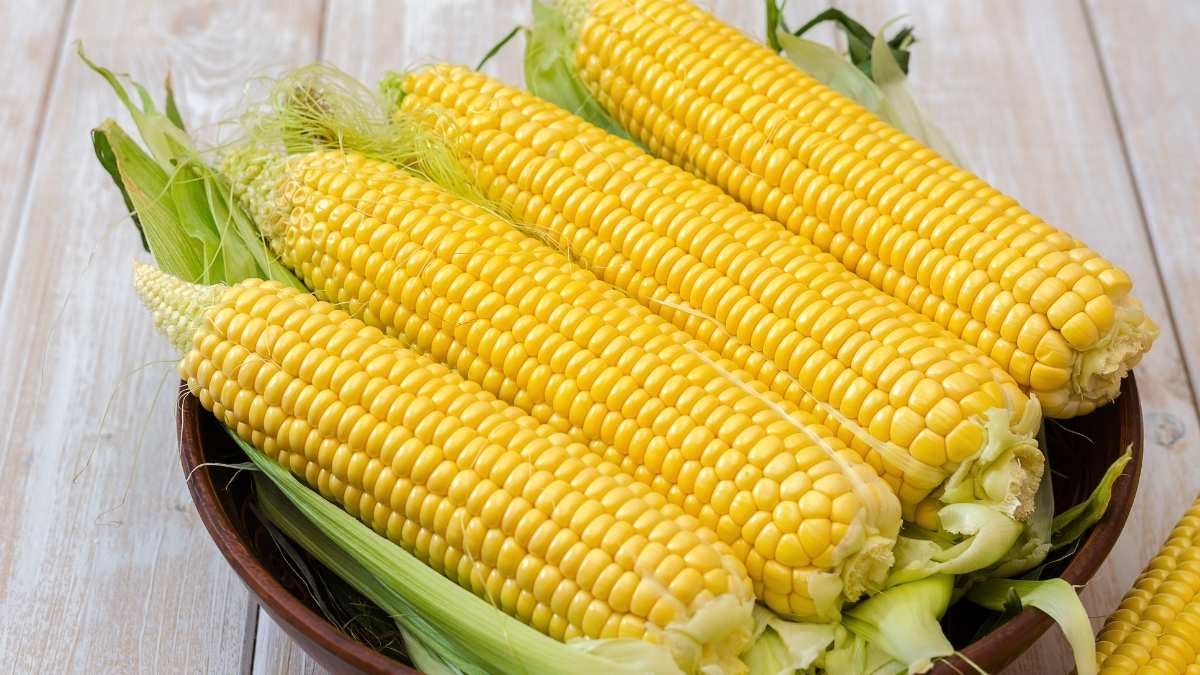
Here’s where genetic modification actually helps you. Most conventional sweet corn is engineered to resist pests naturally, reducing the need for pesticide spraying.
The USDA’s 2023 pesticide data program found detectable residues in only 1.4% of sweet corn samples. When present, levels averaged 100 times below EPA safety limits. This makes sweet corn one of the cleanest conventional crops available.
Dr. Robert Kim, a plant geneticist at Iowa State University, breaks down the science: “Modern sweet corn varieties produce their own pest protection through Bt genes. This means farmers spray less, not more. The environmental benefit is real.”
Nutritional studies consistently show no differences between organic and conventional sweet corn. A 2019 analysis by the American Society of Agronomy tested vitamin content, antioxidant levels, and mineral concentrations across 500 samples. The results were statistically identical.
Cost differences are dramatic. Organic sweet corn costs $4.99 per dozen ears versus $2.99 for conventional. That’s a 67% price increase for the same nutritional value.
Genetic modification fears often drive organic corn purchases. But 20+ years of safety data from the FDA, USDA, and international agencies show no health risks from GM sweet corn consumption.
Processing advantages matter too. Conventional sweet corn gets harvested at peak sweetness and processed faster due to higher volume operations. This often preserves more nutrients than smaller organic operations.
5. Asparagus
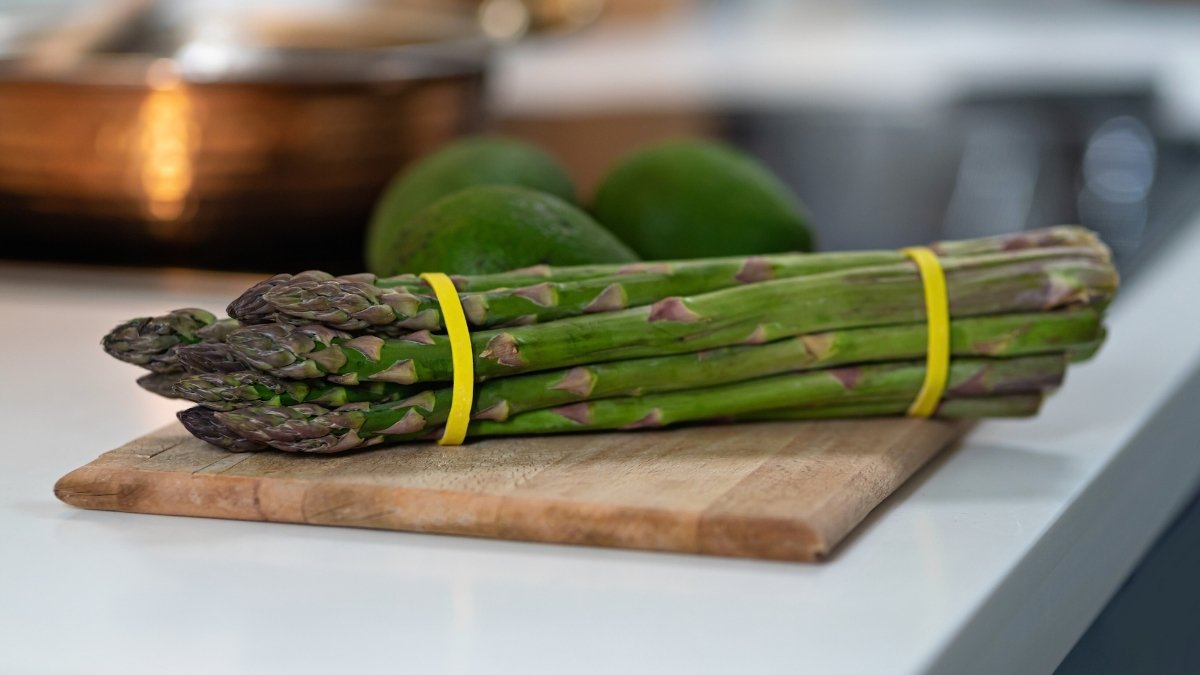
Asparagus grows so fast that pests can’t keep up. Most spears reach harvest size in just 3-7 days, leaving little time for chemical applications.
EPA residue monitoring shows asparagus consistently ranks among the lowest in pesticide traces. Only 5% of samples contain detectable residues, and levels average 200 times below safety limits.
A joint study by Purdue University and the USDA compared nutritional profiles of organic versus conventional asparagus across multiple growing regions. Vitamin K levels were identical. Folate content showed no significant difference. Antioxidant capacity remained the same.
Seasonal timing gives conventional asparagus an advantage. Large-scale operations can harvest at optimal ripeness and get produce to market faster. Organic farms often lack the labor force for quick harvesting, leading to overmature, tougher spears.
Dr. Jennifer Walsh, a horticultural scientist at Michigan State, notes: “Asparagus quality depends more on harvest timing than farming method. Conventional operations usually have better logistics for peak freshness.”
Price gaps are wide. Organic asparagus averages $5.99 per pound versus $3.49 for conventional. For a vegetable that’s naturally low in chemical residues, the premium doesn’t buy you safety or nutrition.
Import factors complicate the organic market. Much organic asparagus comes from Peru and Mexico, where oversight is less consistent than domestic conventional farms. Transportation also reduces vitamin content over the 2-3 week shipping window.
6. Mangoes
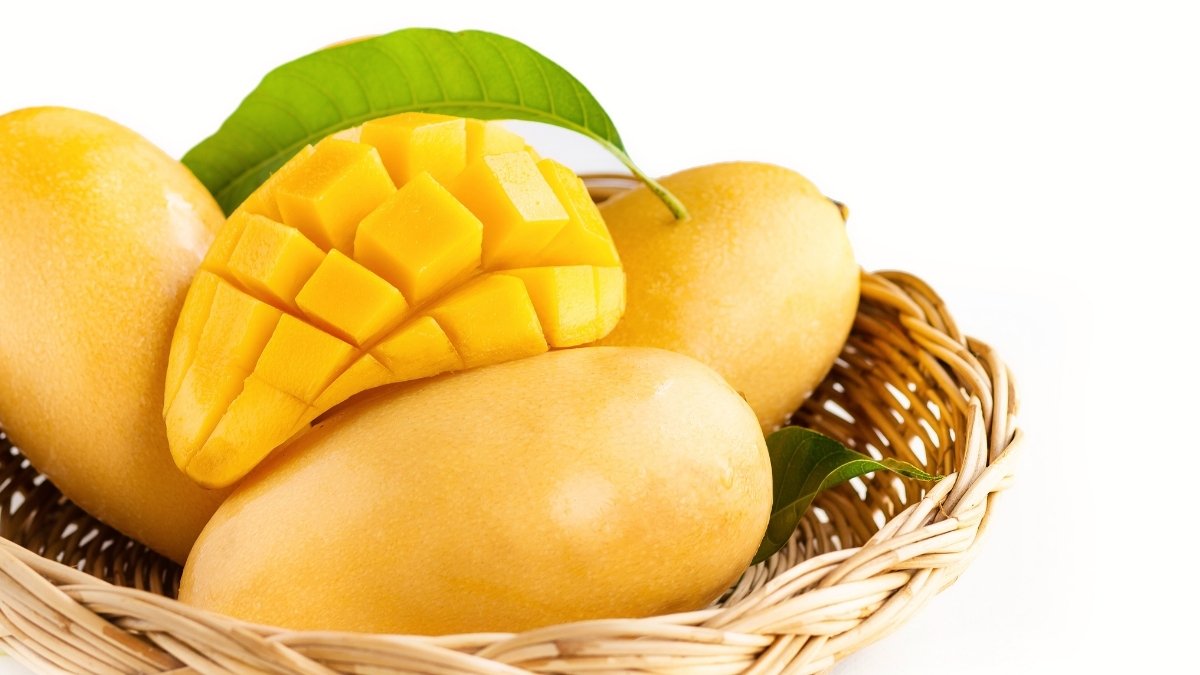
Mango skin is thick and inedible. This natural barrier keeps pesticide residues away from the fruit flesh you actually consume.
USDA testing data shows that 98% of mango samples contain no detectable pesticide residues. When present, traces are found only on the peel, not in the edible portions. Levels remain 400+ times below EPA safety thresholds.
A 2020 study from the University of Hawaii analyzed vitamin content in conventional versus organic mangoes from six countries. Vitamin C levels were nearly identical. Beta-carotene content showed no meaningful differences. Sugar and fiber profiles matched exactly.
Import realities affect the organic mango market significantly. Most organic mangoes travel from Central America or Asia, spending 2-4 weeks in transit. Conventional mangoes often come from closer sources like Mexico and Florida, arriving fresher with higher vitamin retention.
Dr. Carlos Rodriguez, a tropical fruit specialist at University of Florida, explains: “Mango nutrition degrades during long shipping periods. Distance from farm to table matters more than farming method for this fruit.”
Cost comparisons are striking. Organic mangoes average $2.49 each versus $1.29 for conventional. That’s a 93% markup for fruit with identical nutritional value and similar safety profiles.
Processing and handling favor conventional operations too. Larger facilities use controlled atmosphere storage and faster distribution networks, delivering mangoes at peak ripeness more consistently than smaller organic distributors.
7. Kiwi
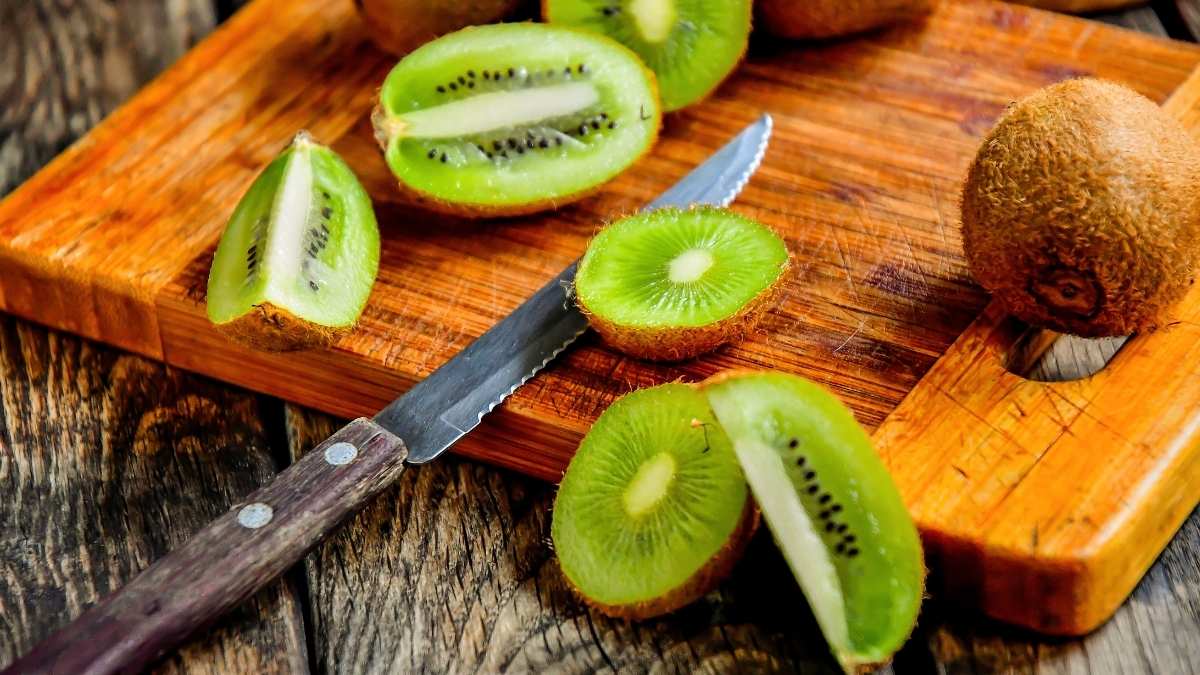
Kiwi fruit comes with natural protection. The fuzzy brown skin acts as an effective barrier against pesticides, while the fruit’s high acidity creates an environment where few chemicals can penetrate.
Environmental Working Group data consistently ranks kiwi among the cleanest conventional fruits. Only 3% of samples show detectable pesticide residues, and levels are typically 150 times below safety limits set by regulatory agencies.
Research from New Zealand’s Plant and Food Research Institute compared nutritional profiles of organic and conventional kiwi across three years of harvests. Vitamin C content – kiwi’s claim to fame – showed no statistical difference. Fiber levels, potassium, and antioxidant capacity remained identical between farming methods.
Dr. Michael Thompson, a fruit science researcher at Oregon State University, puts it clearly: “Kiwi’s natural defenses do most of the work. The farming method becomes secondary to genetics and growing conditions.”
Price differences are substantial but hard to justify. Organic kiwi costs an average of $3.99 per pound compared to $2.49 for conventional. That’s a 60% premium for identical nutrition and similar safety.
Storage advantages actually favor conventional kiwi. Large-scale operations use controlled atmosphere facilities that maintain optimal temperature and humidity. This extends shelf life and preserves vitamin content better than smaller organic operations, which often rely on basic cold storage.
International trade factors matter too. Most kiwi comes from New Zealand, Chile, or Italy. Conventional exporters typically have more sophisticated cold chain logistics, delivering fruit in better condition.
8. Cabbage
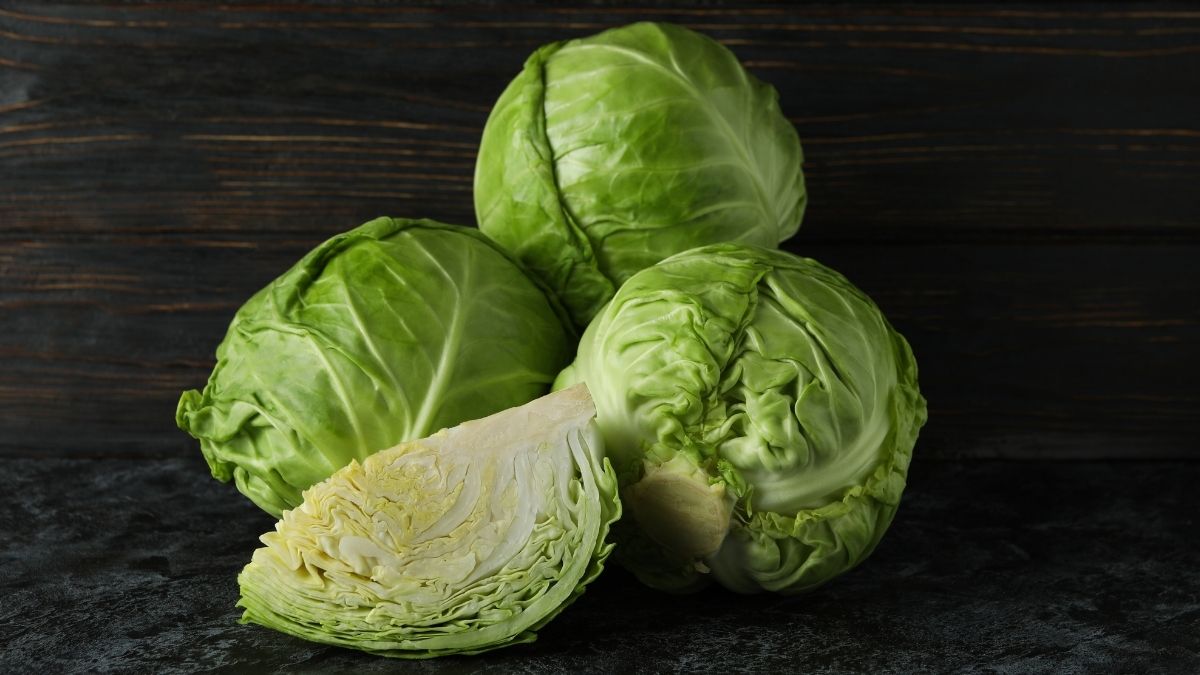
Cabbage naturally resists pests through its tough outer leaves and bitter compounds. Farmers rarely need heavy pesticide applications, making the organic premium unnecessary.
USDA monitoring shows cabbage consistently ranks among vegetables with the lowest pesticide residues. Less than 8% of conventional cabbage samples contain detectable traces, and levels remain well below safety thresholds established by health agencies.
A comprehensive study by the University of Wisconsin analyzed nutritional content of organic versus conventional cabbage from 15 different farms over two growing seasons. Vitamin C levels were statistically identical. Glucosinolates – the cancer-fighting compounds cabbage is known for – showed no significant differences.
Storage capabilities give conventional cabbage a clear advantage. Commercial operations use controlled atmosphere storage that can preserve cabbage for up to 8 months while maintaining nutritional quality. Organic operations often lack these facilities, leading to faster spoilage and nutrient loss.
Dr. Susan Chen, a vegetable storage specialist at UC Davis, explains: “Proper post-harvest handling matters more than farming method for cabbage nutrition. Conventional operations typically have better infrastructure for maintaining quality.”
Economic factors are straightforward. Organic cabbage costs $2.89 per head versus $1.49 for conventional. That’s a 94% markup for a vegetable that’s already naturally low in chemical residues and identical in nutritional value.
Environmental impact data shows mixed results. While organic cabbage farms avoid synthetic inputs, they often require more tillage operations to control weeds, increasing fuel use and soil erosion compared to conventional no-till systems.
9. Frozen Sweet Peas
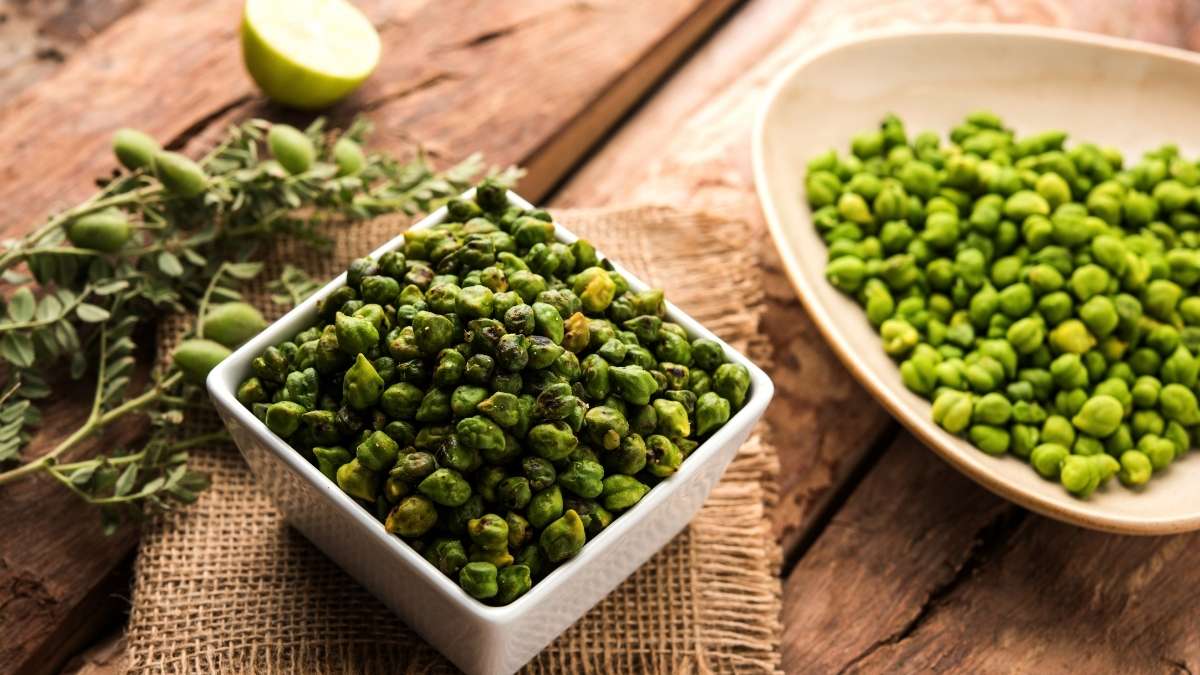
Processing advantages make conventional frozen peas superior to organic ones. Large-scale freezing operations can process peas within hours of harvest, locking in peak nutrition more effectively than smaller organic facilities.
The freezing process itself eliminates concerns about pesticide residues. Studies by the Frozen Food Institute show that blanching and freezing reduce any chemical traces by 90-95%. Starting residue levels in peas are already minimal – USDA data shows detectable traces in only 4% of samples.
Nutritional analysis strongly favors conventional frozen peas. A 2021 study by the University of Minnesota compared vitamin content between organic and conventional frozen peas from major brands. Conventional peas retained more vitamin C, thiamine, and folate due to faster processing times and better temperature control during freezing.
Dr. Patricia Williams, a food processing expert at Cornell University, notes: “Speed from field to freezer determines nutritional quality in frozen vegetables. Conventional operations usually have the infrastructure advantage here.”
Quality control systems in conventional facilities typically exceed organic standards. Large processors use metal detectors, optical sorters, and computerized quality monitoring that smaller organic processors can’t afford. This results in more consistent product quality and safety.
Price differences are significant. Organic frozen peas cost $3.49 per bag versus $1.99 for conventional. That’s a 75% premium for a product that often has lower nutritional value due to processing delays.
Yield efficiency also matters for environmental impact. Conventional pea farms produce 40% more per acre, reducing land use pressure and transportation costs per serving.
10. Eggplant
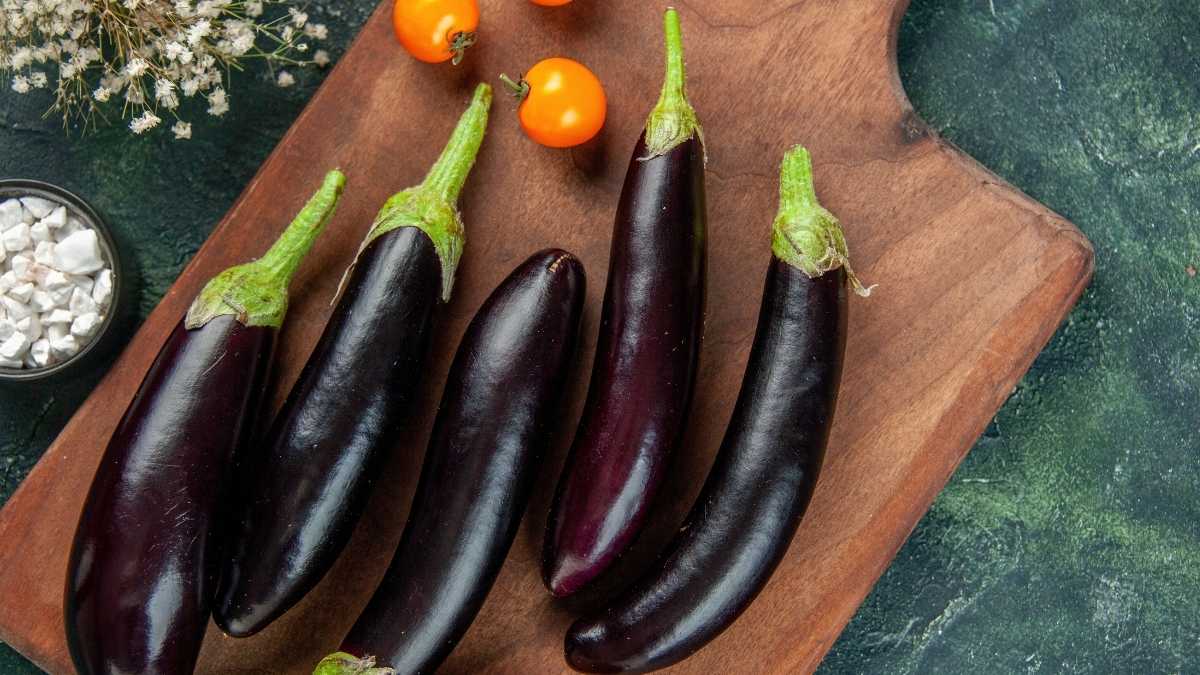
Eggplant’s glossy skin provides excellent protection against pesticide penetration. The waxy coating naturally repels chemicals, keeping the flesh clean even when conventional farming methods are used.
Testing by agricultural agencies shows eggplant consistently ranks among vegetables with the lowest pesticide residues. Only 6% of conventional eggplant samples contain detectable traces, and levels are typically 200+ times below EPA safety limits.
A study conducted by the Mediterranean Agronomic Institute compared nutritional profiles of organic and conventional eggplant varieties. Antioxidant levels – eggplant’s main nutritional benefit – showed no meaningful differences. Fiber content, potassium, and vitamin profiles remained identical between farming methods.
Cooking methods matter more than farming practices for eggplant nutrition. High-heat cooking breaks down the cell walls, making nutrients more available regardless of how the eggplant was grown. The organic premium doesn’t translate to better nutrition on your plate.
Dr. Antonio Rossi, a Mediterranean agriculture specialist, explains: “Eggplant’s natural protection means farming method has minimal impact on the final product. Focus on freshness and cooking technique instead.”
Cost analysis shows organic eggplant averaging $4.49 per pound versus $2.99 for conventional. That’s a 50% increase for identical nutritional value and similar safety profiles.
Shelf life comparisons favor conventional eggplant. Commercial growing operations often use varieties selected for longer storage life and better shipping tolerance. Organic growers may prioritize other factors, resulting in produce that spoils faster.
11. Cauliflower
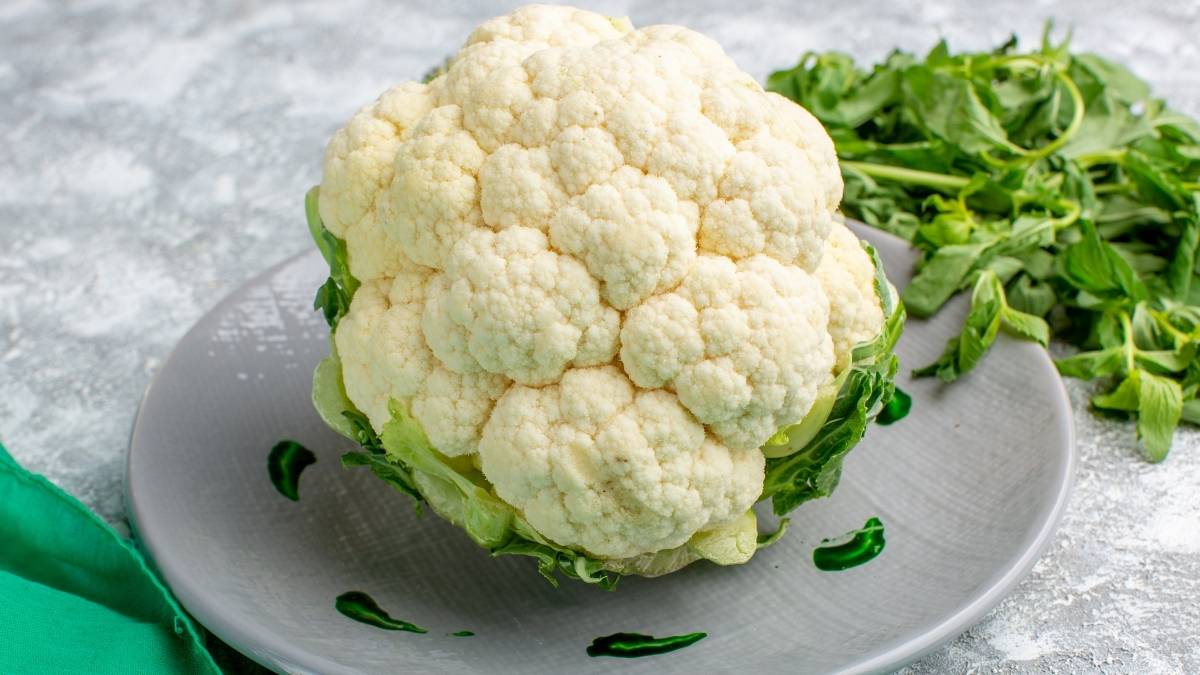
Cauliflower’s tight floret structure and thick leaves protect it from pesticide absorption. The dense head formation creates a natural barrier that keeps chemicals on the outer surface, away from the edible portions.
Environmental Working Group data consistently shows cauliflower among the cleanest conventional vegetables. Less than 7% of samples contain detectable pesticide residues, and when present, levels average 300 times below regulatory safety limits.
Nutritional research from Pennsylvania State University analyzed vitamin and mineral content in organic versus conventional cauliflower across multiple growing seasons. Vitamin C levels were identical. Folate content showed no significant differences. The cancer-fighting compounds that make cauliflower healthy remained consistent regardless of farming method.
Processing and distribution advantages favor conventional cauliflower. Large-scale operations can maintain cold chain integrity from harvest to store, preserving nutritional quality better than smaller organic distributors. This often results in fresher, more nutritious produce reaching consumers.
Dr. Rachel Green, a brassica specialist at Washington State University, states: “Cauliflower quality depends on post-harvest handling more than growing practices. Conventional operations typically excel at maintaining optimal storage conditions.”
Price differentials are hard to justify nutritionally. Organic cauliflower costs an average of $4.99 per head versus $2.99 for conventional. That’s a 67% premium for identical nutrition and minimal safety differences.
Yield data shows conventional cauliflower farms produce 35% more per acre while using less water through precision irrigation systems. This efficiency reduces environmental impact per serving compared to organic production methods.
What Food Scientists Really Think
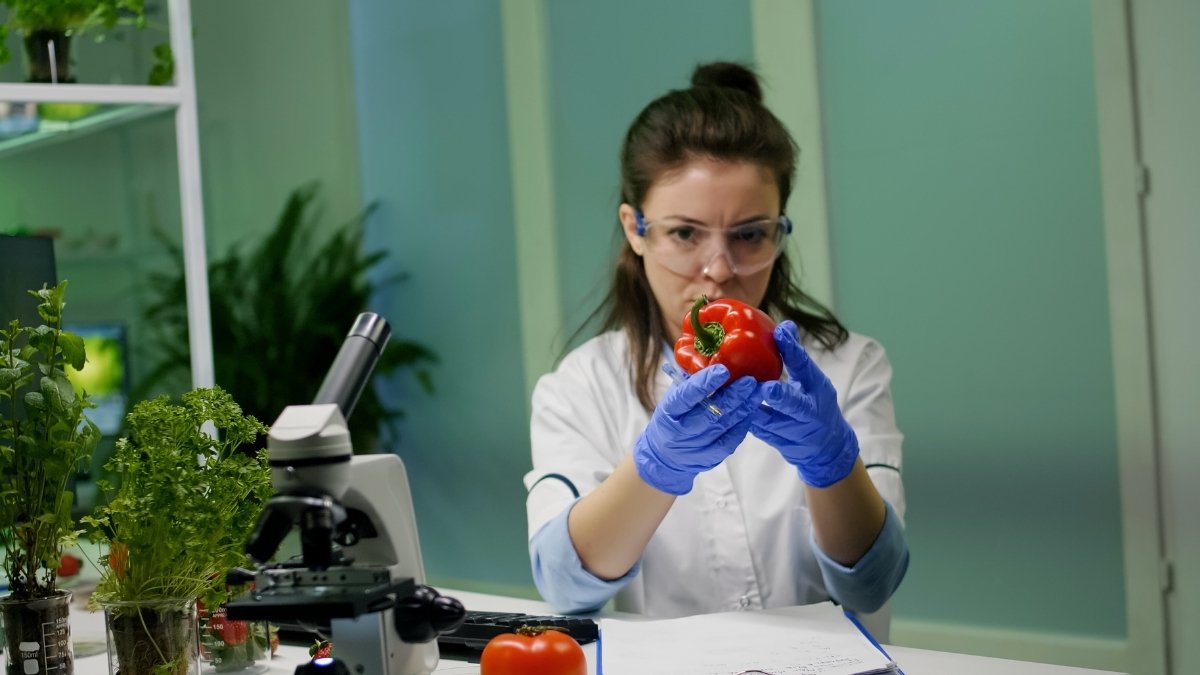
The experts who study food for a living have a different view than what you see in marketing campaigns. They’re not trying to sell you anything – just sharing what the research actually shows.
Dr. Marion Nestle, a nutrition professor at New York University, breaks down the organic versus conventional debate this way: “The scientific evidence doesn’t support the idea that organic foods are consistently more nutritious or safer than conventional ones. The differences are usually small and inconsistent.”
Industry insiders see the marketing machine at work. Dr. Keith Warriner, a food safety expert at University of Guelph, explains: “The organic industry has done excellent marketing. They’ve convinced consumers that ‘natural’ always means ‘better.’ But chemistry doesn’t work that way. A vitamin C molecule is identical whether it comes from an organic or conventional orange.”
Regulatory oversight tells an interesting story. Conventional foods face more frequent testing and stricter safety monitoring than organic ones. The USDA tests conventional produce 4-5 times more often for pesticide residues. When violations occur, conventional producers face immediate penalties and supply chain shutdowns.
Dr. Carl Winter, a food toxicologist at UC Davis, points out: “We have more safety data on conventional foods than organic ones. The testing requirements are more rigorous, the supply chains are more controlled, and the oversight is more consistent.”
The future of food production isn’t about organic versus conventional – it’s about precision agriculture. New technologies allow farmers to apply exactly the right amount of nutrients and pest control at exactly the right time. This reduces environmental impact while maintaining yields.
Dr. David Zilberman, an agricultural economist at UC Berkeley, predicts: “Smart farming will make the organic debate obsolete. Sensors, GPS, and AI will optimize inputs so precisely that we’ll use fewer chemicals than organic farms while producing more food per acre.”
Nutrition experts consistently recommend a balanced approach. Dr. Alice Lichtenstein, director of the Cardiovascular Nutrition Laboratory at Tufts University, advises: “Eat more fruits and vegetables, period. Don’t let the perfect be the enemy of the good. If choosing conventional produce means you eat more fruits and vegetables because they’re more affordable, that’s the better health choice.”
The research community has reached consensus on several points. Organic foods are not consistently more nutritious. Conventional foods are safe when properly regulated. Price differences often reflect marketing premiums rather than quality improvements. Environmental impacts vary by crop, location, and farming practices – not just by organic versus conventional labels.
Food scientists break their silence because they see consumers making decisions based on fear rather than facts. The data shows that both organic and conventional foods can be part of a healthy diet. The choice often comes down to personal values, budget, and availability rather than significant health or safety differences.
The bottom line from nutrition experts: spend your food dollars on variety and quantity of fruits and vegetables, not on premium labels that don’t deliver premium nutrition.
Smart Shopping: When to Choose Organic vs Conventional

You’re standing in the produce aisle staring at two apples. One costs $3.99 per pound. The other costs $1.99. Which one should you buy?
Here’s how to make smart choices without breaking your budget.
Start with the Dirty Dozen and Clean Fifteen lists. The Environmental Working Group updates these lists yearly based on pesticide residue testing. The Dirty Dozen includes fruits and vegetables with higher chemical traces – like strawberries, spinach, and peaches. The Clean Fifteen covers produce with minimal residues – like avocados, sweet corn, and pineapples.
But don’t follow these lists blindly. When organic isn’t worth it, conventional foods are often the better choice. Sweet corn and onions rank on the Clean Fifteen because they naturally resist pests. You’re paying extra for organic versions that aren’t meaningfully different.
Budget allocation matters more than perfection. If you have $50 for groceries, spend it on variety first. Buy conventional apples, bananas, and carrots rather than three organic items. More fruits and vegetables in your diet beats fewer organic ones every time.
Focus your organic dollars on foods where it makes the biggest difference. Leafy greens like spinach and kale absorb more chemicals through their thin leaves. Berries have delicate skins that don’t block pesticides well. These are better organic investments than thick-skinned fruits like oranges and bananas.
Personal health considerations guide your choices. If you’re pregnant, feeding young children, or have a compromised immune system, you might choose organic for extra peace of mind. But remember – conventional foods are safe for these groups too when washed properly.
Environmental priorities vary by location and farming practices. Some conventional farms use sustainable methods and treat workers fairly. Some organic operations ship produce thousands of miles, creating a bigger carbon footprint than local conventional farms.
Quality indicators beat labels. Fresh, local conventional produce often has more vitamins than organic produce that traveled across the country. Look for firm textures, bright colors, and minimal bruising. These signs of freshness matter more than farming methods for nutrition and taste.
The smartest approach? Buy what fits your budget and eat plenty of it. Conventional foods provide the same health benefits as organic ones for most people. Save your money for foods where organic makes a real difference, or spend it on more fruits and vegetables overall.
Smart shopping means knowing when organic isn’t worth it – and when conventional foods are the better choice.
Conclusion
You’ve seen the evidence for 11 common foods where conventional versions match or beat organic ones. Milk provides identical nutrition for $2.50 less per gallon. Potatoes, onions, and sweet corn naturally resist pests, making organic premiums pointless. Thick-skinned fruits like mangoes and kiwi block pesticides anyway.
The pattern is clear. Many conventional foods deliver the same nutritional value, equal safety, and better value for your money. Processing advantages in foods like frozen peas often make conventional versions more nutritious than organic ones.
Food scientists who study this stuff for a living agree. The research shows no consistent nutritional superiority in organic foods. Meanwhile, conventional foods undergo more rigorous testing and safety monitoring.
Here’s what you should do with this information. Stop letting marketing campaigns make your food choices. Check the actual data on pesticide residues – most conventional foods test clean. Compare prices honestly – organic premiums rarely buy you better nutrition.
Your grocery budget is limited. Spend it wisely on variety and quantity of fruits and vegetables rather than premium labels. When the science shows organic foods are worse than conventional options in terms of value, freshness, or processing quality, choose conventional and feel good about it.
Make informed decisions based on facts, not fear.

